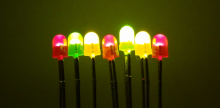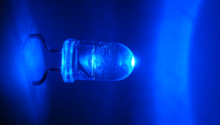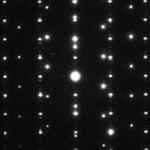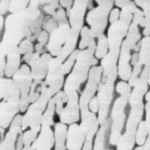 Ultra-violet (UV) light disinfection is one of the most promising methods for water treatment. Unlike chemical disinfection it will be fast and easy to use and will not require hazardous materials, has no danger of overdosing and does not produce toxic by-products. It has long been established that UV light can be used for air and water purification and surface decontamination. Until recently the main UV source for that application was mercury lamps. However, mercury lamps are not readily portable, are fragile, have a limited lifetime, and have a disposal problem.
Ultra-violet (UV) light disinfection is one of the most promising methods for water treatment. Unlike chemical disinfection it will be fast and easy to use and will not require hazardous materials, has no danger of overdosing and does not produce toxic by-products. It has long been established that UV light can be used for air and water purification and surface decontamination. Until recently the main UV source for that application was mercury lamps. However, mercury lamps are not readily portable, are fragile, have a limited lifetime, and have a disposal problem.
 AlGaN-based LEDs are a possible new alternative deep UV (DUV) light source, where light emitted in this region of the spectrum destroys disease-causing bacteria. If efficient devices can be developed, they will be easy to use, have a long life time, will not be fragile and will lend themselves to battery operation to allow their use in remote locations. Changing the composition of the active AlGaN layer allows us to tune easily the wavelength of the LEDs. Such DUV LEDs will also have potential applications for UV solid state lighting and drug detection.
AlGaN-based LEDs are a possible new alternative deep UV (DUV) light source, where light emitted in this region of the spectrum destroys disease-causing bacteria. If efficient devices can be developed, they will be easy to use, have a long life time, will not be fragile and will lend themselves to battery operation to allow their use in remote locations. Changing the composition of the active AlGaN layer allows us to tune easily the wavelength of the LEDs. Such DUV LEDs will also have potential applications for UV solid state lighting and drug detection.

One of the most severe problems hindering progress of DUV LEDs is the lack of suitable substrates on which lattice-matched AlGaN films can be grown. The consequence of a poor match is a very high defect density in the films which can impair device performance. Currently the majority of AlGaN LED devices are grown on sapphire and only rarely on expensive GaN or AlN substrates. The lattice mismatch between the substrate and the active AlGaN layer results in poor structural quality of the layers, cracks and poor morphology of the current DUV LED devices. As a result the efficiency of AlGaN DUV LEDs is still very low. AlxGa1-xN substrates with tunable Al contents would be preferable to those of either sapphire, GaN or AlN for many ultraviolet device applications, which require active AlxGa1-xN layers with x~0.5. Bulk AlxGa1-xN substrates, which are matched in lattice constant and thermal expansion properties to epitaxial nitride layers are needed for fabrication of the highest-quality AlGaN-based DUV devices.
 The main aims of this project are the growth of free-standing wurzite AlGaN substrates by MBE, comprehensive analysis of their structural, optical and transport properties and MOVPE development of the first DUV AlGaN LEDs on AlGaN substrates. This is the first step towards developing commercially viable production of high efficient DUV LEDs on AlGaN substrates.
The main aims of this project are the growth of free-standing wurzite AlGaN substrates by MBE, comprehensive analysis of their structural, optical and transport properties and MOVPE development of the first DUV AlGaN LEDs on AlGaN substrates. This is the first step towards developing commercially viable production of high efficient DUV LEDs on AlGaN substrates.
This project is a collaboration between the University of Nottingham, where molecular beam epitaxy (MBE) will be used to grow AlGaN substrates, the Cambridge Centre for GaN nitride, where the devices will be grown, and the University of Bath, where detailed device characterisation will be performed. MBE is normally regarded as an epitaxial technique for the growth of very thin layers with monolayer control of their thickness. However, researchers at Nottingham have adapted the MBE process for bulk crystal growth and have produced free-standing layers of metastable zinc-blende (cubic) GaN of up to 100 microns in thickness and up to 3-inches in diameter.


